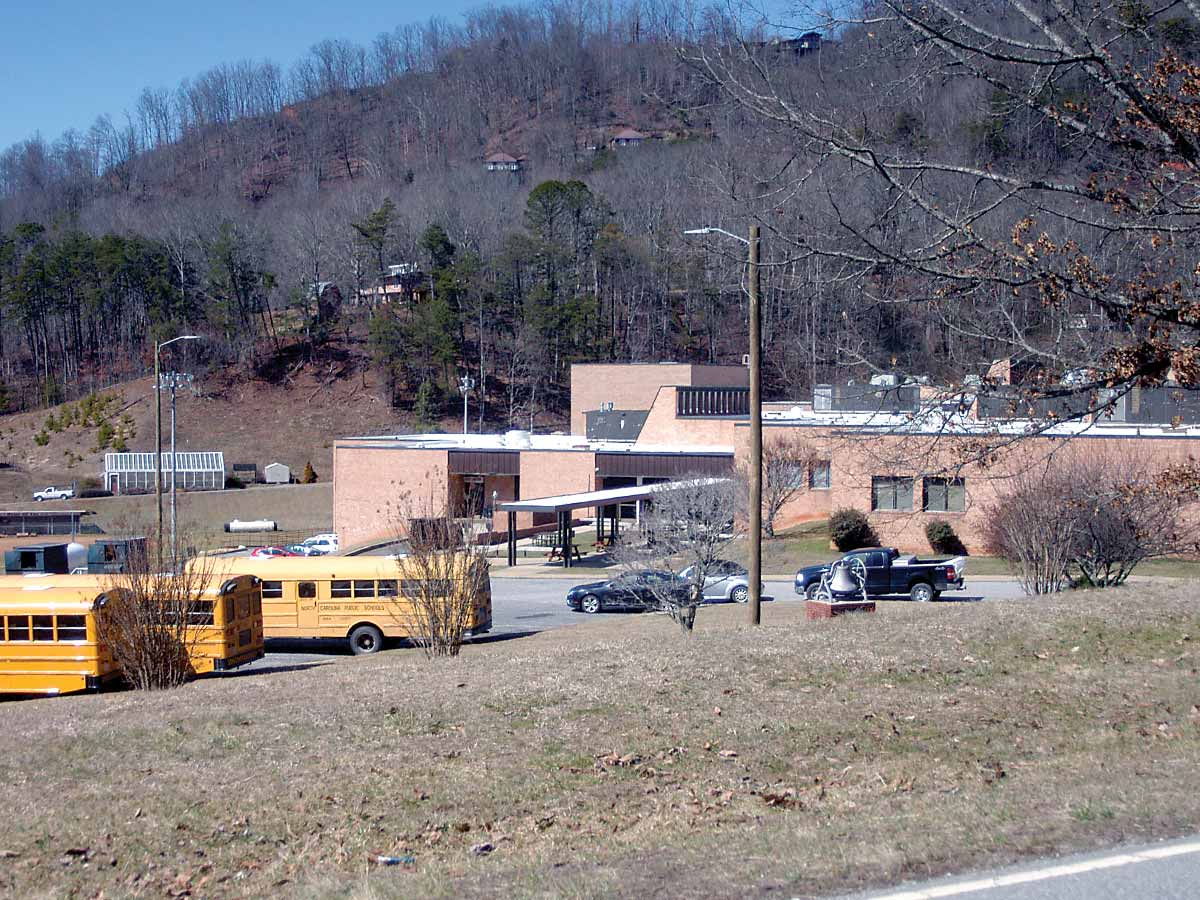Schools struggle with state-mandated pay increases
 Pictured here is Swain County High School. The county’s schools have struggled to pay for state-mandated pay increases.
Pictured here is Swain County High School. The county’s schools have struggled to pay for state-mandated pay increases.
As Swain County Schools digs into the 2022-23 budget, staff are planning for the largest fund balance allocation needed in recent years — over $1 million — to balance that budget. This is largely due to the discrepancy between state mandated pay increases for public school staff and state/federal funding levels.
“It’s unfunded mandates that are hurting us, mostly,” said Superintendent Dr. Mark Sale during a Nov. 14 board of education meeting. “It seems that the legislature’s goal is to expect local government to cover more, and that’s what we’re seeing now.”
The state budget, signed into law in July, provided salary increases for all public school employees in the fiscal year. It also increased retirement rates to 24.5% and increased health insurance premiums to $7,397 per employee, per year. This is a $378 per employee increase, totaling an additional $113,000 for the school system in insurance payments. The total increase in health insurance payments over the last two years is $321,000. The school system will pay $249,813 more this year in retirement, $438,000 more than it was paying two years ago.
In addition to step increases, as well as an increase to the overall salary schedule for public school employees, the state budget also mandated increases for hourly employees in the school system. Last year, hourly employees got an increase of 2.5% or up to $13 per hour, whichever was greater. This year that increased again by 4% or to $15 per hour.
These increases resulted in a 15.4% increase in salaries for the Swain County School system.
While employee salaries are increasing, funding revenues are decreasing. Since the pandemic began, school systems have been “held harmless” for decreases in ADM, average daily membership. State and federal funding for local school systems depend on the number of students within a school system, but throughout the pandemic schools were funded according to 2019-20 numbers, taken during the first half of the school year.
Related Items
In Swain County Schools, the student population was estimated at 1,960 during the 2019-20 school year. During the first month of the 2022-23 school year 1,811 students were counted.
“What that really means for us is that we’ve had a reduction of 100 students, which has affected our allotments,” said Stephanie Treadway, finance director for the school system.
Teacher position allotments have decreased by 4.6 positions as a result of the decreased ADM. This equates to a reduction of $236,500 in state funding. While dollar allotment funding increased 2.6% over last year, salaries and fringes have increased more than 15%.
The bottom line
“Dollar allotments are not keeping pace with mandated increases,” said Treadway. “The state is mandating these increases but yet we are not receiving the funding to keep up with that.”
Counties like Swain receive Small County Supplemental funding from the state. The dollar amount, $1.6 million, has not increased in 10 years. Swain uses the money primarily to pay for salaries and benefits. The funding gap has resulted in more teachers having to be paid with local funds. The school system has had to add over four teaching positions, three teacher assistants and almost two full custodian positions to local fund expenditures.
“Being a small county, we just don’t have the local funding,” said Treadway. “We’re seeing the ability for us to use that funding for positions just shrinking.”
The total estimated budget for the 2022-23 school year is $31,577,717. Of that, 50% will go toward salaries, 23% will go toward benefits, 9% to services, 9% to supplies and 8% to capital needs.
State allotments will pay for 238 full time equivalent employees, which account for almost all the state funding. Local funds pay for 15 employees, primarily maintenance staff, as well as four reading teacher assistants paid for by a special fund from the county. Federal funds, which still include non-recurring ESSER funds from the pandemic, pay for 26 full time equivalent employees.
State allotments make up 54% of the Swain County Schools budget, federal funding accounts for 17%, local funding 5%, grant funding outside of normal federal and state allotments make up 15%, and child nutrition accounts for about 7%.
The child nutrition department has a total budget of just over $2 million. Almost all of this budget goes toward funding supplies and the 25 full time equivalent employees in the department.
“Once again, the majority here will be supplies, just because food costs have gone up dramatically,” said Treadway. “Also, the increase in salaries and fringes has really taken effect on child nutrition because once again the reimbursements from the federal government are not keeping pace with what the state mandates are.”
The school nutrition department estimates $565,500 in local revenue from sale of food, $1,248,000 in federal funding, $1,300 in state funding and $47,000 in transfers. In order to balance the school nutrition budget, staff estimate the need to appropriate $317,745 from the school system’s fund balance.
“This is a difficult year [to make projections] because, with covid, we have to go back three years to get a gauge as to where we are, but in the meantime, we’ve had such increases in the salaries and fringes and supply costs,” said Treadway. “The main thing I wanted to point out here is as of right now, based on our budget, and we’ve really tried to get things as lean as possible, we are still looking at having to use $317,000 in fund balance to try to make that budget balance. Hopefully our reimbursements will be more than what we anticipate, but right now we are budgeting to spend 317,000 basically from our savings.”
Overall, the school system is estimating a $1,049,298 fund balance appropriation to balance its budget.
“The majority of that is coming from what we’re having to take off of the state public school fund because we do not have the funding to cover the mandates,” said Treadway.
During the budget overview at the Nov. 14 school board meeting, board member Mitch Carson noted that the school board would need to tack on the needed funds in its funding request from the county. Superintendent Sale said the solution may be more involved.
“That would be an approach,” said Sale. “It is getting to a point where we are going to have to have a push there. The other side of that is, [staff] and I are going to look at every single position in our school system to see how we can offer it more efficiently and more effectively. And if there’s a place where we can combine positions, we’ll do that. At the same time, I cannot take money out of the classroom. We’ll have to look in other places, everywhere that we can, but the kids deserve the lion’s share and that’s what we’ll do. But again, it’s unfunded mandates that are hurting us, mostly.”
Sale noted that this funding shortfall is not unique to Swain County, but one that districts across the state will be facing post-COVID.
“I think it’s really important for everyone here to recognize that swain county is not the only school system that is fighting this battle,” said Sale. “If you go to any superintendent, any school board, you are going to hear some of the same stories. All of us are struggling in different ways.”
Sale said that while this is the largest fund balance allocation he has seen since he began working as superintendent, he expects to see a reduction in the amount of fund balance needed to balance the budget.









